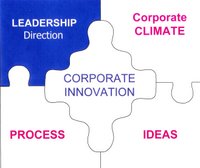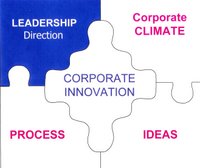
Seven principles to launch leadership challenge
By Stefan Stern
Published: FT October 2 2006 16:17
This is a concise and insightful article on leadership. It was written in the context of the political dynamics in Great Britain but is pertinent to all of us. I edited it for your convenience.
How can the new prime minister avoid the mistakes made by his predecessor? And what lessons are there here for senior managers of all kinds who are about to embark on a new leadership challenge? Several key principles suggest themselves. Guess what? There are seven of them.
Make a strong start. “Leaders always face a clash of expectations,” says Michael Genovese, professor of political science at the Loyola Marymount University in Los Angeles. “It is important to hit the ground running, not hit the ground stumbling. If you prepare properly you increase the likelihood of early successes.” A strong start shapes the public’s perception of a new leader as a winner, and establishes the idea that this is someone who gets things done.
Draw on all the talents. Confident leaders are not afraid to surround themselves with the brightest people at their disposal, including potential rivals. “Hire as many capable people as you can, and then delegate as much to them as you can,” runs an old management saw.
Have clear objectives and prioritize them. “What are the two or three things that you really want to get done?” asks Prof Genovese. “Focus on them. You need to be disciplined, especially when events encroach on to your agenda. You have to react to events, but also be proactive at the same time.”
Managerial freedom. As Prime Minister, Mr Brown could end the excessive control from the centre exercised by Blair – if he can bring himself to do it. “This will be a hard test for someone who has such a firm command of policy detail,” says Graham Allen MP, one of the wisest observers of the UK parliamentary scene, and author of a pamphlet called “The last prime minister – being honest about the UK presidency”.
Just as large corporations have learned to give more power and authority to managers and teams close to their customers, the British prime minister needs to shed some of the enormous managerial burden he currently carries – having to answer questions, for example, on hospital waiting lists in far-flung corners of the country. “The new prime minister could release colleagues’ creativity and at the same time build a stronger organisation,” Mr Allen says.
Celebrate success. “. Successes must be acknowledged. Governments, businesses and organizations need to feel that they are making progress. “Success breeds success, and power breeds power,” Prof Genovese says.
Understand your weaknesses. Good leaders are aware of their weaknesses. Leaders) need to build a core of people around him who will tell it like it is
Be lucky. One thing that remains largely beyond the control of any leader is luck. “Leaders often feel that ‘the damn world keeps interfering with my plan’,” Prof Genovese says. But if you believe, like Seneca, that “luck is where preparation meets opportunity”, you may be able to do something about even this seemingly unpredictable factor.
Leadership is more difficult today than ever, Prof Genovese believes. Problems seem to be more complicated, more global. The lines of national sovereignty have been blurred. And yet the public wants fast, visible results. “Every day is election day in America,” he says.




